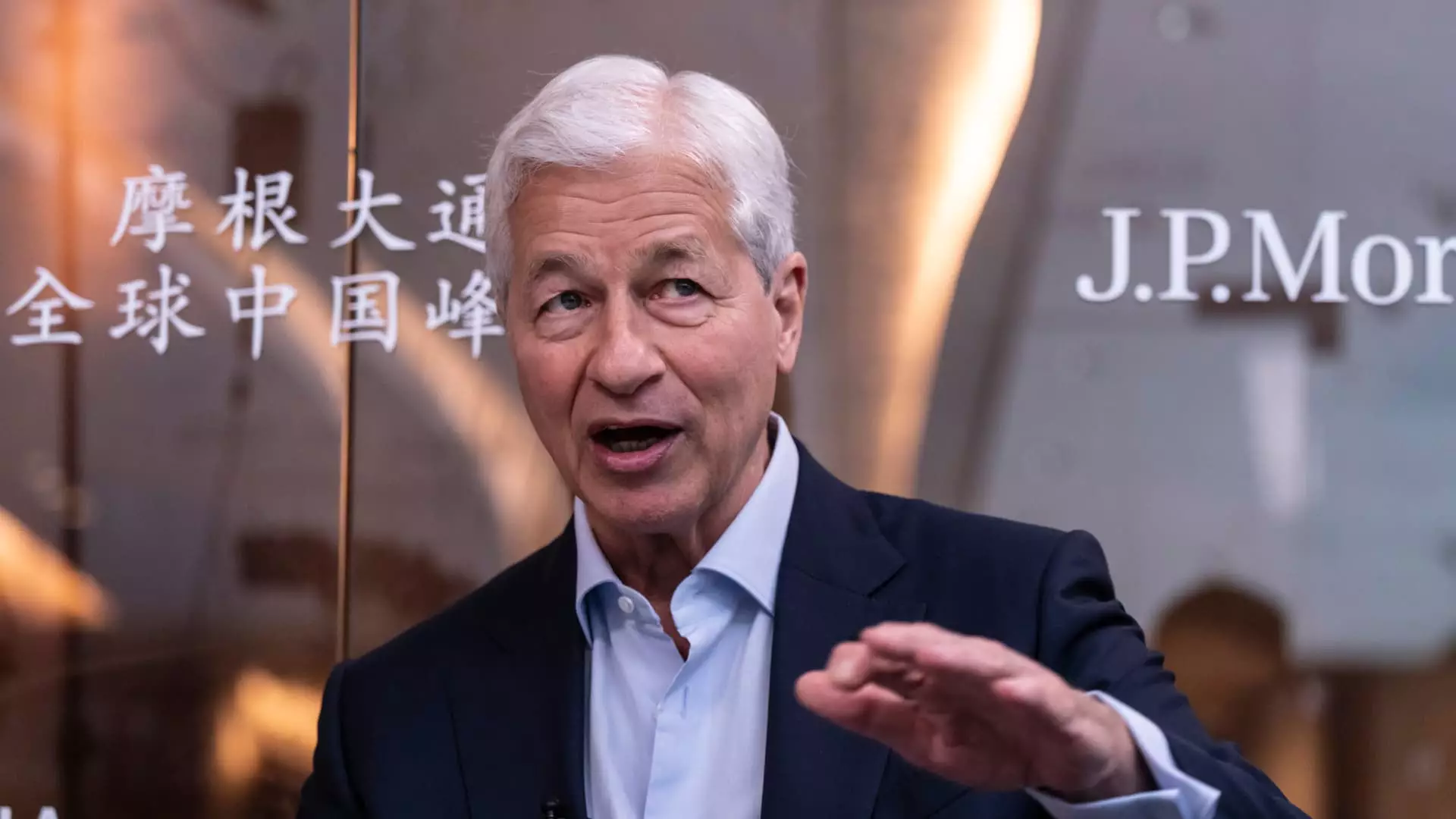Over the years, JPMorgan Chase stood in the shadow of more nimble online brokerages, often perceived as a relic in a world that rapidly embraced tech-driven investing. However, the tides have turned, and the banking giant is determined to redefine its position within the digital investment landscape. With a newly launched suite of tools allowing investors to research and purchase bonds and brokered CDs via their mobile app, JPMorgan is not just emerging from the sidelines; it is declaring itself a formidable player in the online investing arena.
Recent developments indicate a significant pivot in JPMorgan’s strategic approach to wealth management. This move is not merely about catching up but about reshaping the customer experience. Paul Vienick, head of online investing at JPMorgan’s wealth management segment, emphasizes the simplicity of their platform, tailoring it to the modern investor’s needs. By integrating customized screens and comparative bond yields into their existing banking app, they are simplifying a previously convoluted process that often dissuaded potential investors. This endeavor is laudable; it demonstrates a commitment to enhancing user accessibility. Still, one must question whether such modifications are sufficient to shift their identity from a traditional bank to a robust online investment powerhouse.
The Struggle to Gain Market Share
Despite being the largest bank by assets in the U.S., JPMorgan’s stature in the online investing landscape remains relatively diminutive when compared to established online brokerages like Charles Schwab, Fidelity, and E-Trade. With only $100 billion in assets under management — dwarfed by its competitors who have spent years, if not decades, cultivating their platforms — JPMorgan’s journey feels akin to that of a latecomer scrambling to catch a speeding train. The profound challenge exists not only in reclaiming tarnished brand perception but also in unraveling decades of entrenched investor behavior.
JPMorgan’s earlier efforts, like the “You Invest” initiative launched in 2018, offered a free-trade service, but failed to resonate with the target audience, forcing the bank to rebrand and rethink its approach. Even in the realm of financial advisement, where high-touch service has historically reigned supreme, the bank finds itself trailing behind — managing just 10% of dollars held by affluent households. Vienna’s candid comments referencing the bank’s previous product shortcomings highlight an uncomfortable truth: adaptation in a fast-evolving sector often requires painful introspection and restructuring.
Understanding the Shifting Investor Demographics
As financial landscapes change, so too do the demographics of the investors navigating these waters. Today’s investors increasingly prefer autonomy, opting for self-directed methods over traditional interactions with advisors. This paradigm shift calls for JP Morgan to actively cater to a growing segment of self-directed investors who engage in trading a few times each month. By courting these individuals, the bank seeks to create a more engaged user base while also addressing its asset management deficiencies.
One of the strategies involves enticing users from competitor platforms with promotional incentives, including up to $700 for transferring funds to JPMorgan’s self-directed platform. While this gambit may draw attention, the driving force behind sustained growth must extend beyond monetary enticements. The bank needs to foster a deeper trust and address the concerns of investors who have built robust relationships with their current brokers. This is no small feat, particularly if JPMorgan’s past missteps continue to echo in the minds of potential clients.
A Future of Ambitious Growth
Under the leadership of Vienick, who boasts a history with notable firms such as TD Ameritrade and Morgan Stanley, JPMorgan’s future ambitions seem bullish. His vision aligns with a broader acknowledgment that in the current financial ecosystem, providing user-friendly digital tools is crucial, even for a bank with such a storied legacy. Vienick’s assertion that self-directed investing could evolve into a trillion-dollar business is a bold claim — one that highlights the conviction driving the bank’s renewed efforts to frame itself as a serious competitor.
With plans to introduce features like after-hours trading, the bank is inching closer to an integrated experience that substantial investors crave. Strengthened by JPMorgan’s vast branch network and resources, there is a considerable optimism emanating from the company regarding its potential ascension in the online brokerage space. Yet the road ahead remains laden with challenges, as the bank must continually innovate while also convincing investors to make a potentially significant switch in their financial habits.
While JPMorgan Chase aspires to become a pillar in self-directed investing, only time will tell if these efforts will truly resonate with investors and translate into lasting market share. Its battle against legacy perceptions and competitive benchmarks will ultimately shape its trajectory within an ever-evolving financial ecosystem.



Leave a Reply